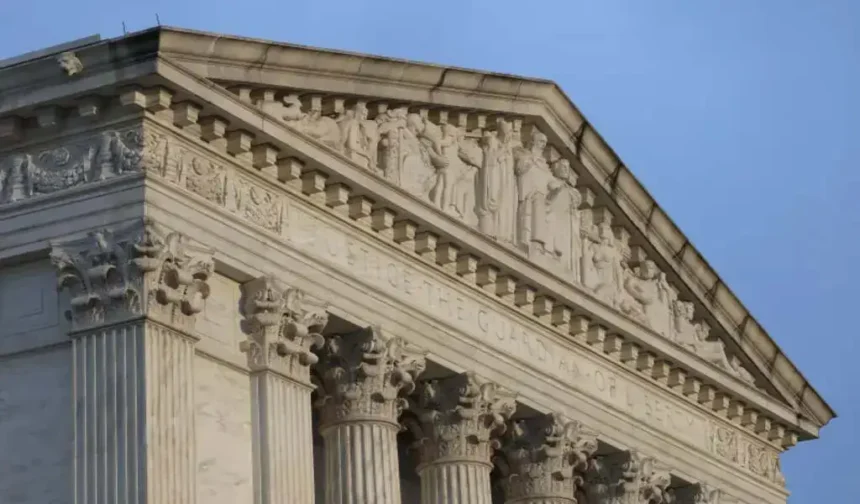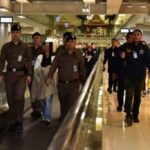(CTN News) – On Tuesday, the US Supreme Court granted the Trump administration permission to provisionally terminate the employment of 16,000 federal probationary employees.
In an unsigned decision that did not evaluate the constitutionality of the terminations, the court declared that the groups in issue lacked legal standing to contest the dismissal of government personnel.
The vote count was seven to two. Justices Sonia Sotomayor and Ketanji Brown Jackson, as stated in the judgment, advocated for a cessation of the firings until the dispute is resolved in subordinate Supreme Court.
The Supreme Court narrow ruling does not provide a general ruling on the matter; rather, it is limited to the NGOs enumerated in the case that was heard on Tuesday. Nevertheless, the court’s decision exacerbates the challenge for organizations that are affected by government layoffs to consistently oppose mass terminations.
The Supreme Court’s decision is a victory for the Trump administration’s endeavors to consolidate executive power under the White House by significantly reducing the number of government programs and agencies.
Termination of probationary employees
In response to President Trump’s executive order, which was issued on February 11, the Office of Personnel Management directed agencies to terminate all probationary non-essential employees.
Typically, probationary employees are either seasoned workers transitioning into new roles or recently employed agency workers.
Many agencies promptly initiated the process of terminating employees, ultimately resulting in the termination of tens of thousands.
In order to prevent the terminations, a coalition of nonprofit organizations and unions representing federal employees filed a lawsuit against the Office of Personnel Management and other agencies, such as the Departments of Veterans Affairs, Agriculture, Defense, Energy, Interior, and Treasury.
According to those who opposed the dismissals, OPM did not possess the authority to issue termination orders. The plaintiffs contended that the federal government had failed to provide sufficient notice to the terminated individuals and the affected state and local authorities, a violation of the proper procedures for terminating probationary federal employees.
The unions were initially denied legal standing by Judge William Haskell Alsup, a San Francisco district court judge appointed by former President Bill Clinton, while the nonprofits pursued the case because they relied on government services and claimed that the government’s diminished capacity had harmed them.
After a brief hearing last month, Alsup reinstated federal employees from six departments: Agriculture, Defense, Energy, Interior, Treasury, and Veterans Affairs.
Alsup asserts that the Office of Personnel Management, which is accountable for developing the government’s human resources strategy, is incapable of authorizing agencies to terminate employees in significant numbers.
Decisions like these are made by departments.
As per the administration, the terminations were otherwise acceptable, and OPM had not directed agencies to take any action. The argument was received by the Court of Appeal, but it declined to intervene immediately.
The Trump administration has insisted that the justices intervene and escalating the matter to the Supreme Court.
As with all employment disputes, the government contended in its Supreme Court filings that the dispute regarding terminations was exclusively between the federal government and its employees.
The government argued that the groups lacked standing to file this complaint on behalf of the employees because the employees were compelled to contest their terminations through the appropriate, albeit constrained, procedures, with each employee engaging in an individual struggle.
Supreme Court mostly agreed with Trump administration that NGOs shouldn’t have sued.
Although the Supreme Court’s stay allows the administration to provisionally enforce the terminations while it pursues legal action in federal court, it does not suggest that the terminations were legal.
After the High Court deferred to address these matters on Tuesday, additional parties with more compelling standing arguments may submit a complaint at a later date.
A comparable legal dispute is currently occurring in Maryland’s lower courts. Nineteen states and the District of Columbia have filed a case to restore employees from more than twenty distinct agencies, with some degree of success observed thus far.
The states that are currently engaged in litigation in Maryland may have a more compelling argument than the NGOs that were affected by Tuesday’s ruling if they can provide a more robust defense of their legal position.
SOURCE: NPR
SEE ALSO:
Trump Threatens More Tariffs in the Wake of Falling Global Markets.
April 9 is Expected to See the RBI Cut Interest Rates By 25 Basis Points.
Fugitive Broker in US$217 Million Dr. Boon Healthcare Fraud Case Arrested

Salman Ahmad is known for his significant contributions to esteemed publications like the Times of India and the Express Tribune. Salman has carved a niche as a freelance journalist, combining thorough research with engaging reporting.














